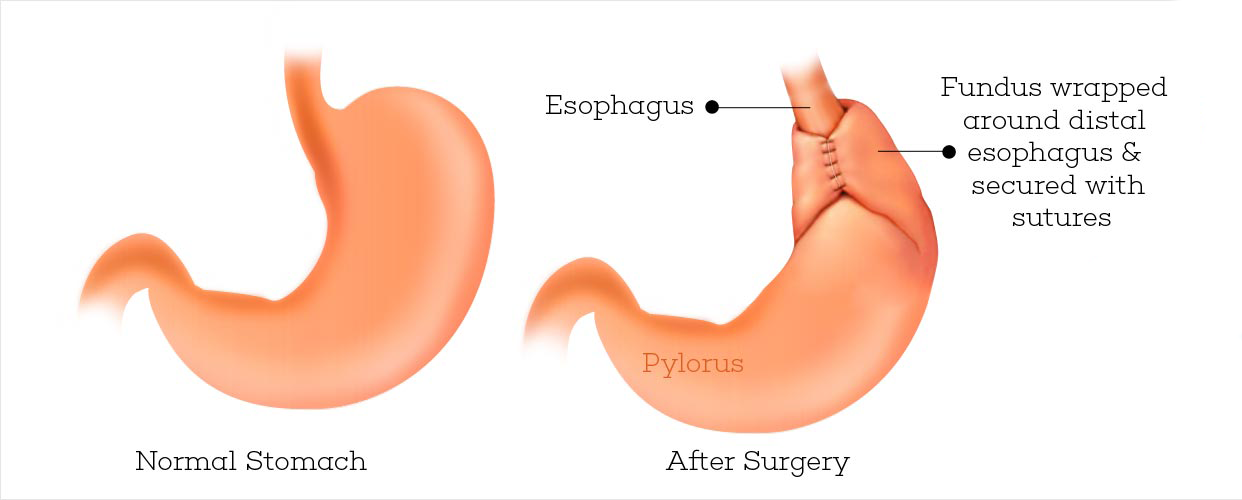
Nissen Fundoplication is a surgical procedure to treat gastroesophageal reflux disease (GERD) and hiatal hernia. In GERD it is usually performed when medical therapy has failed, but with paraesophageal hiatus hernia, it is the first-line procedure. The Nissen fundoplication is total (360°), but partial fundoplications known as Belsey fundoplication (270° anterior transthoracic), Dor fundoplication (anterior 180-200°) or Toupet fundoplication (posterior 270°) are also alternative procedures with somewhat different indications.
Overall, Nissen Fundoplication has proven its success and efficacy over other modalities of treatment for GERD. It carries 90% success rate long term for control of GERD.
After the operation the patient should expect some difficulty in swallowing that may last up to 2 months. Rarely does it last longer, if so Endoscopy is required to check if the 360 stomach wrap is tighter than usual, and it can be dilated in the same setting.
Bloating is another feeling that usually follows this procedure. It usually disappears after 1-2 months. In patients who have Irritable Bowel Syndrome, or issues with motility of the stomach these symptoms may be exaggerated. That is why, it is of utmost importance to determine if the patient has any underlying problems prior to undergoing this procedure.

